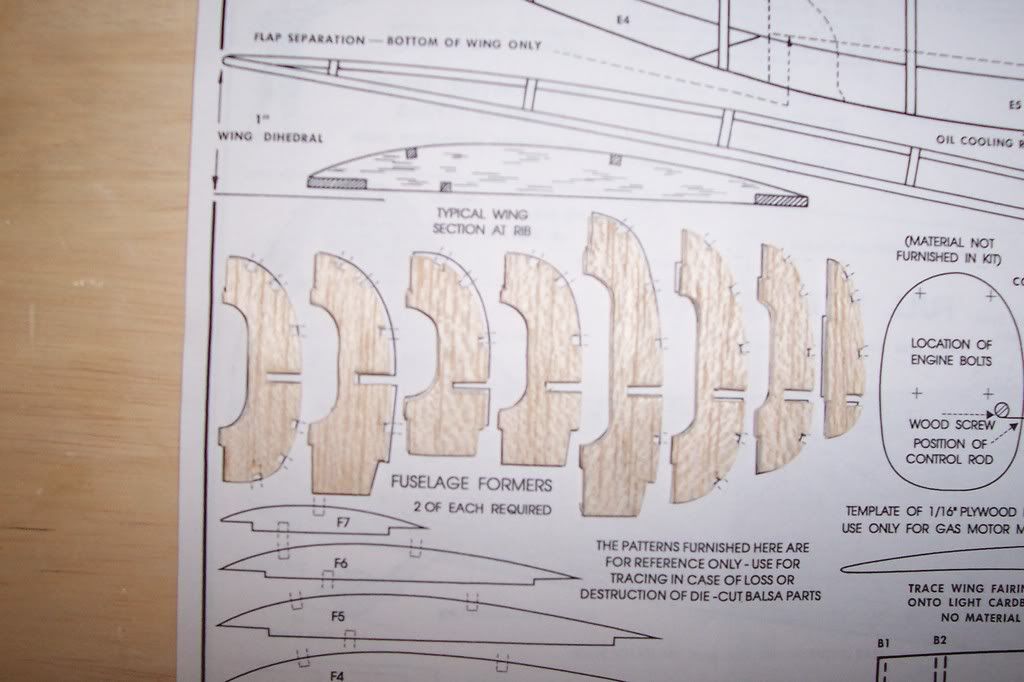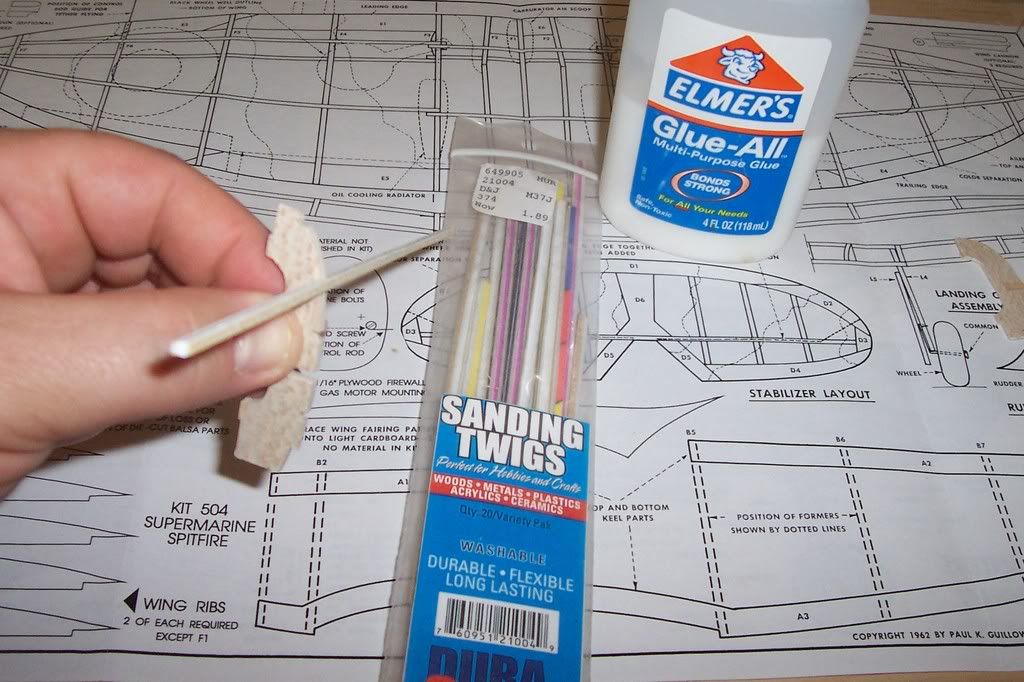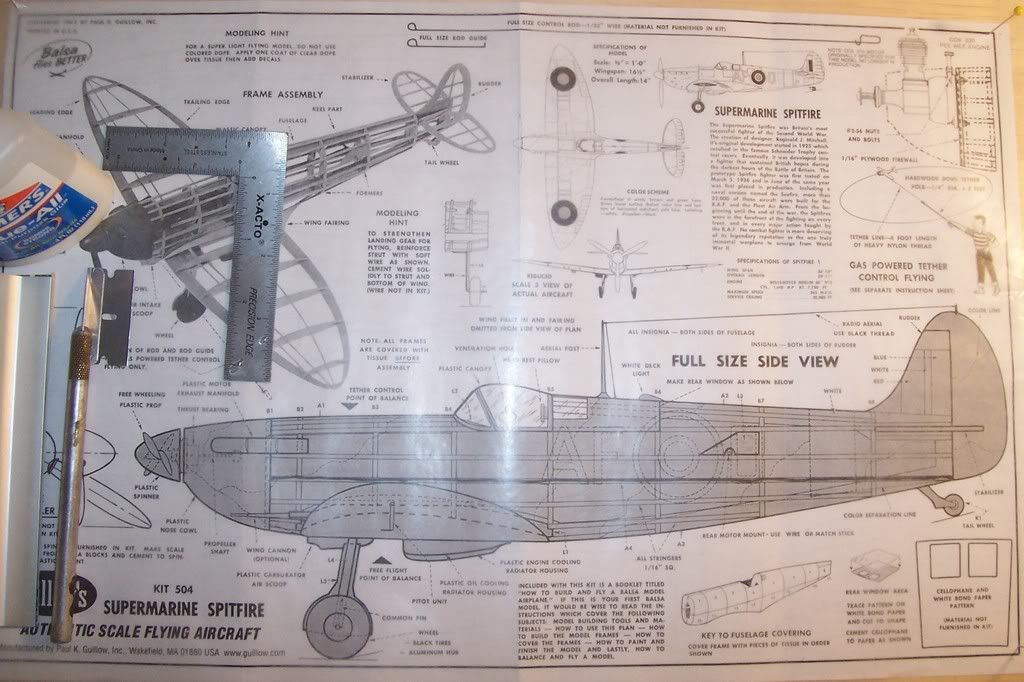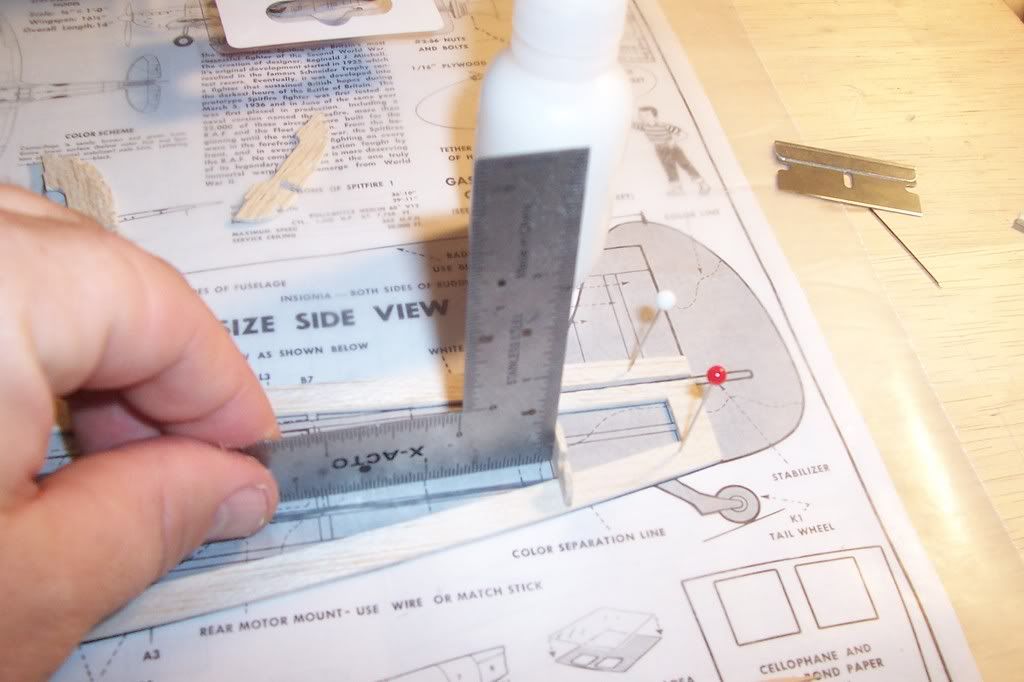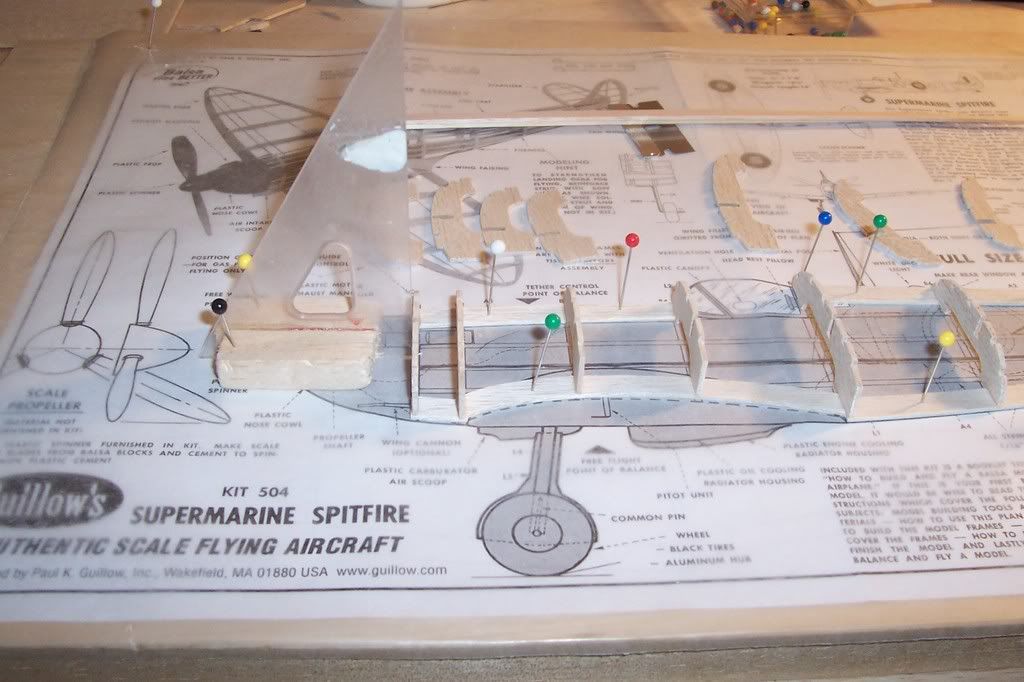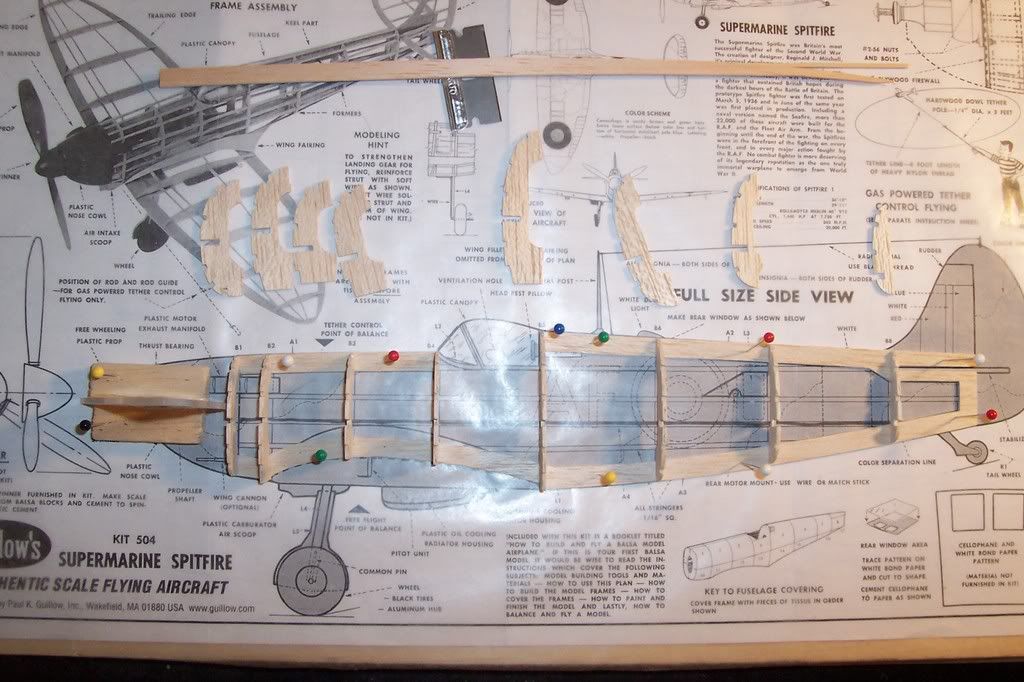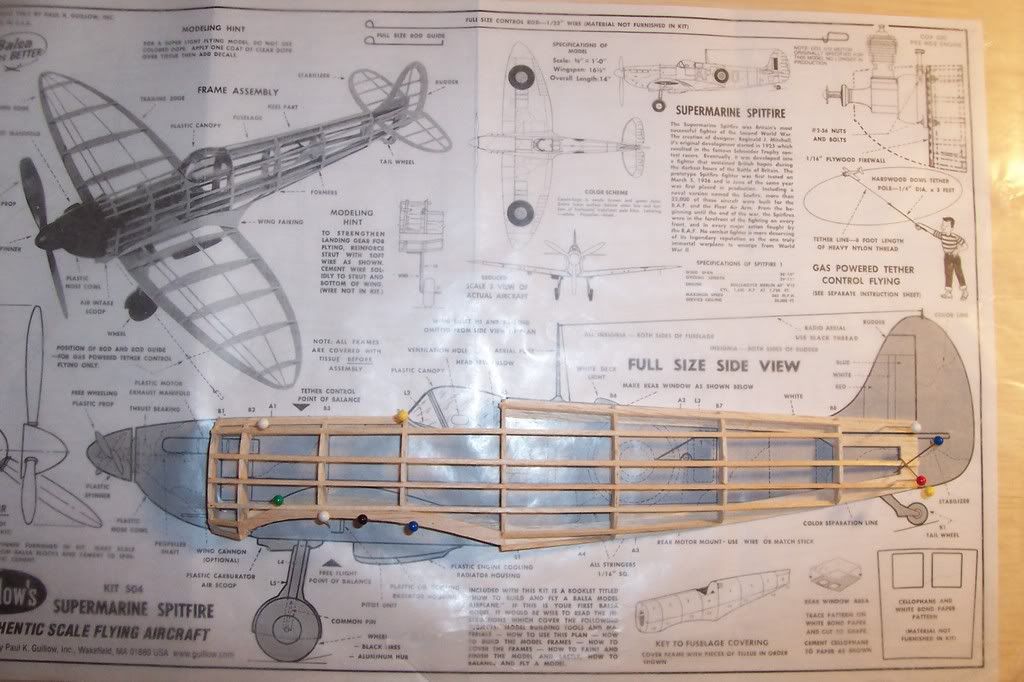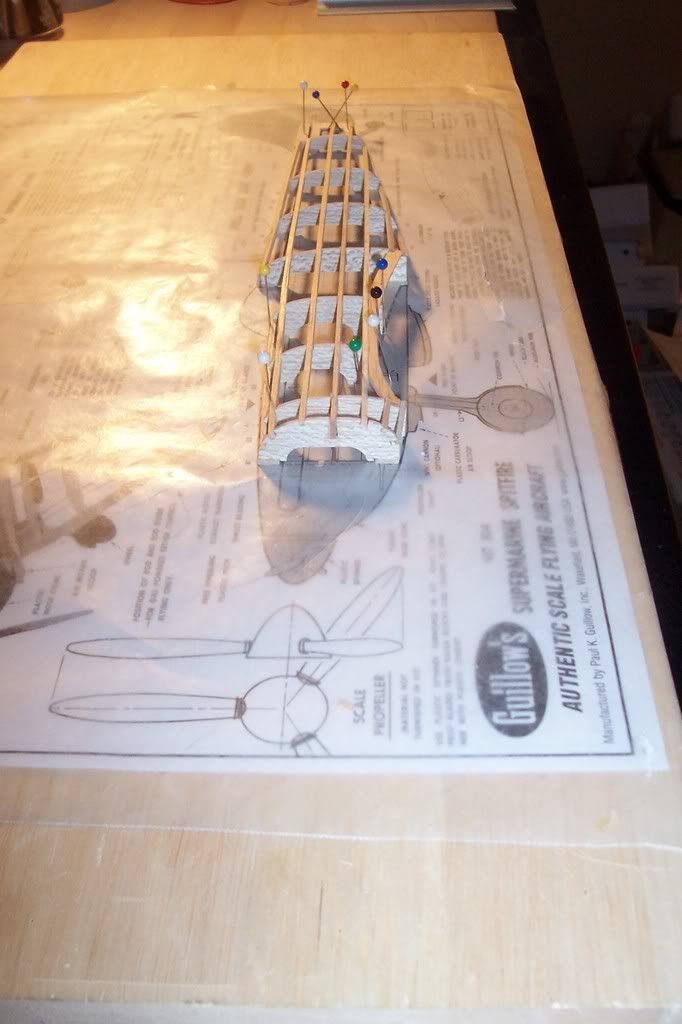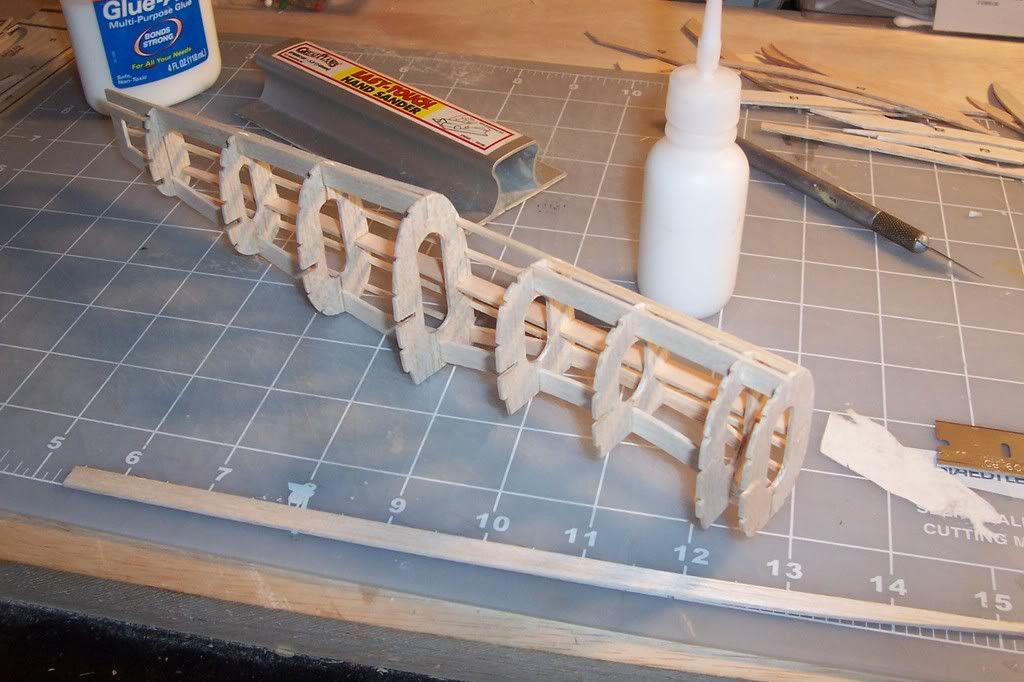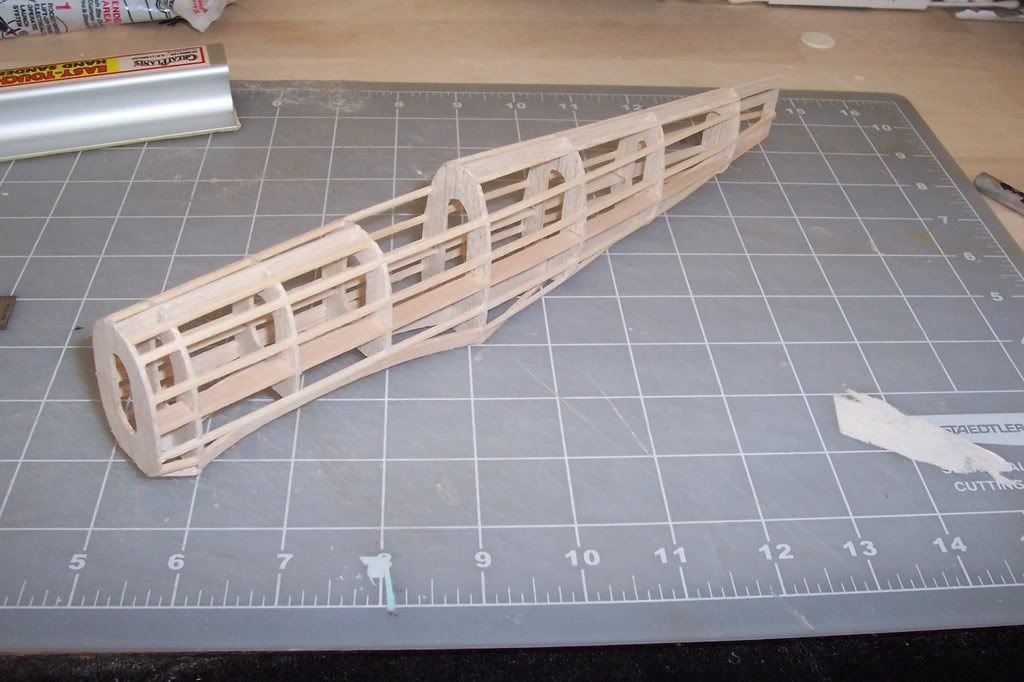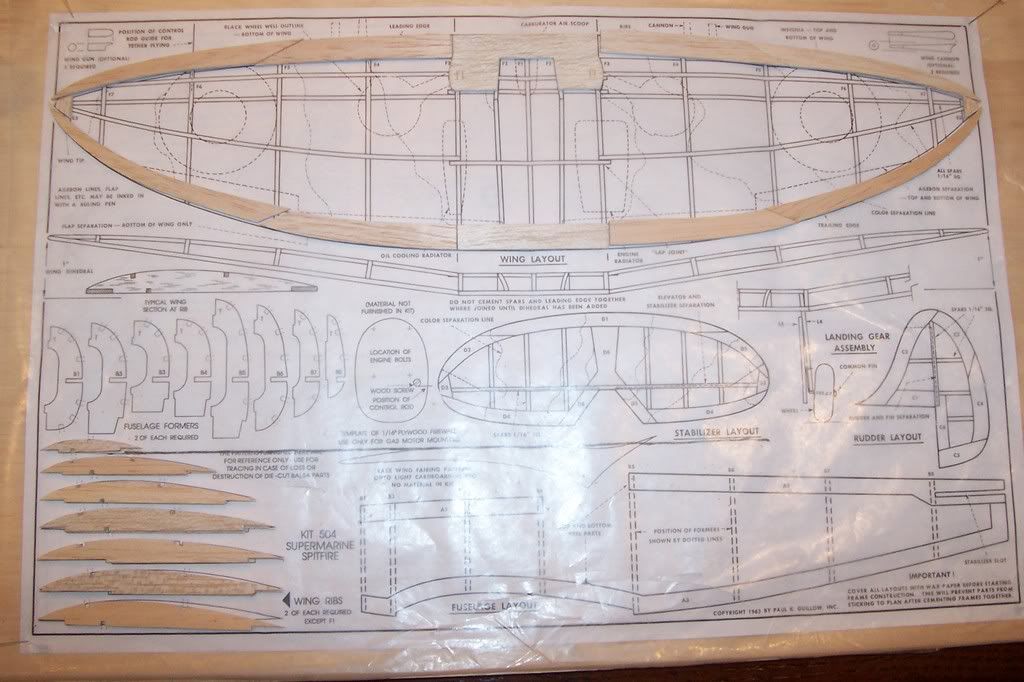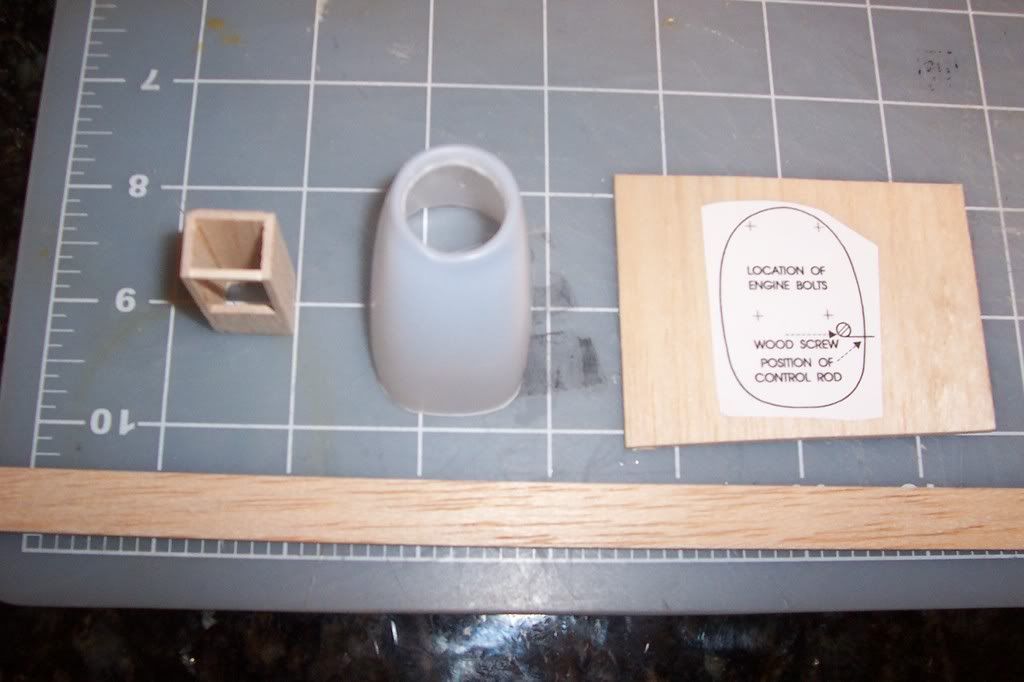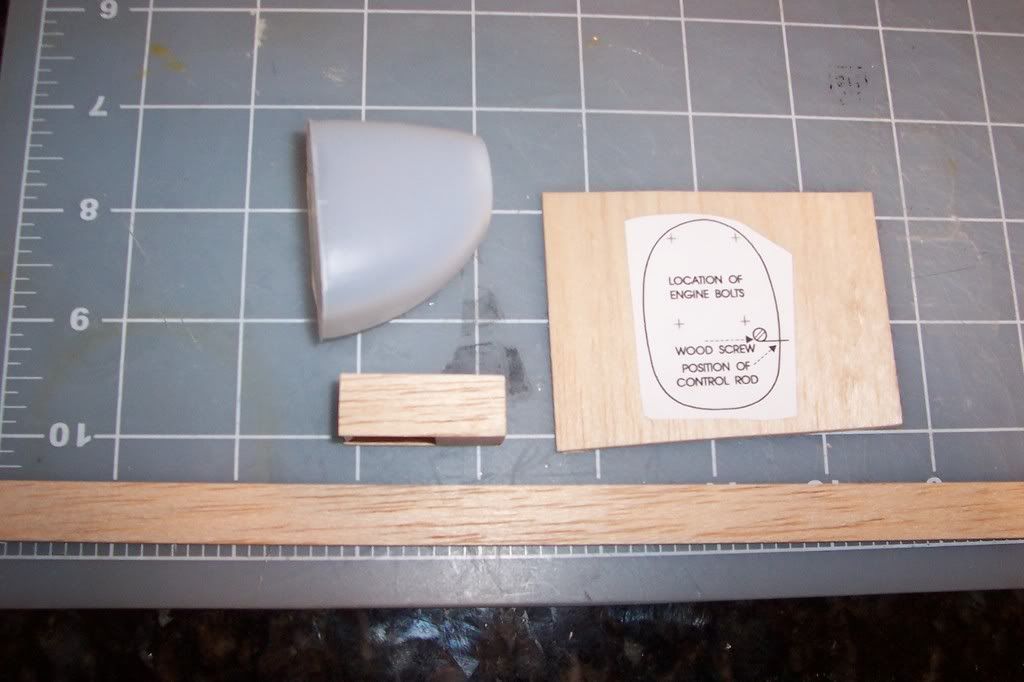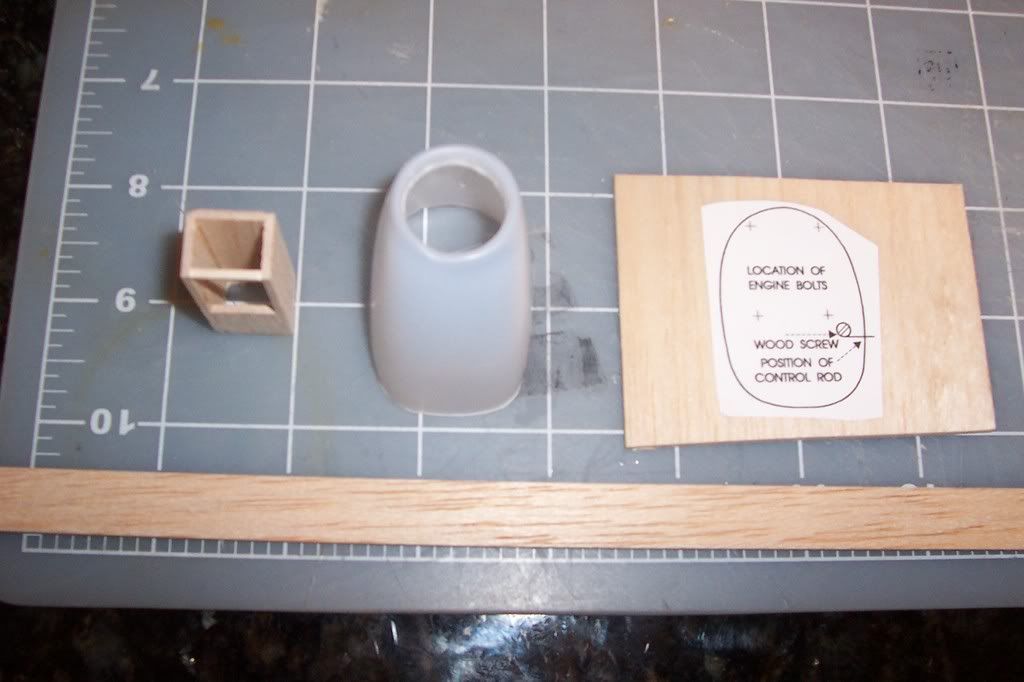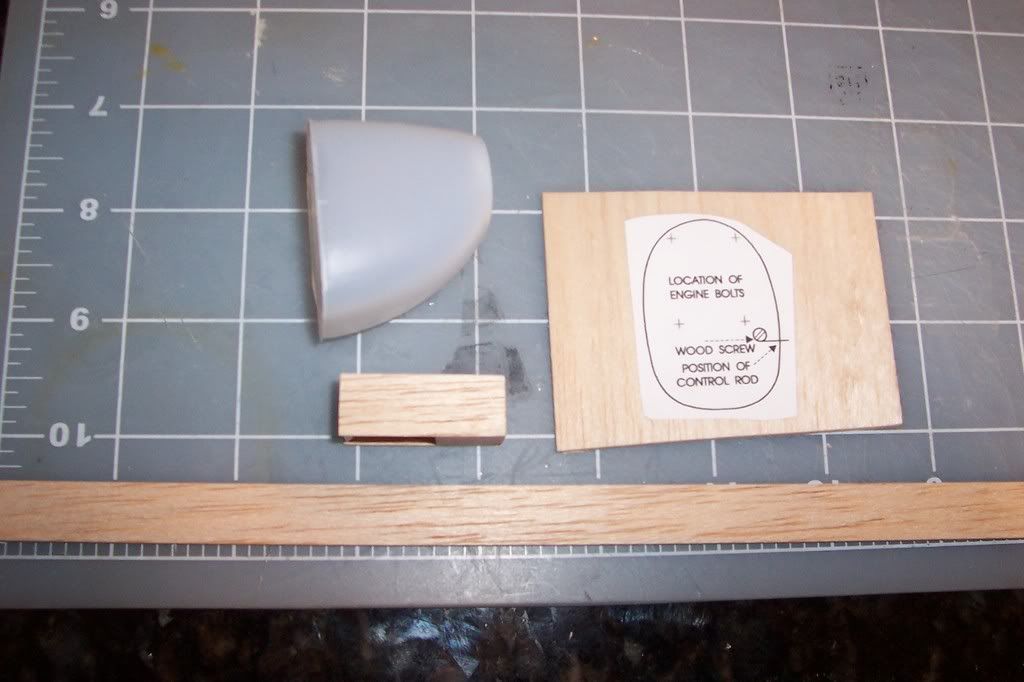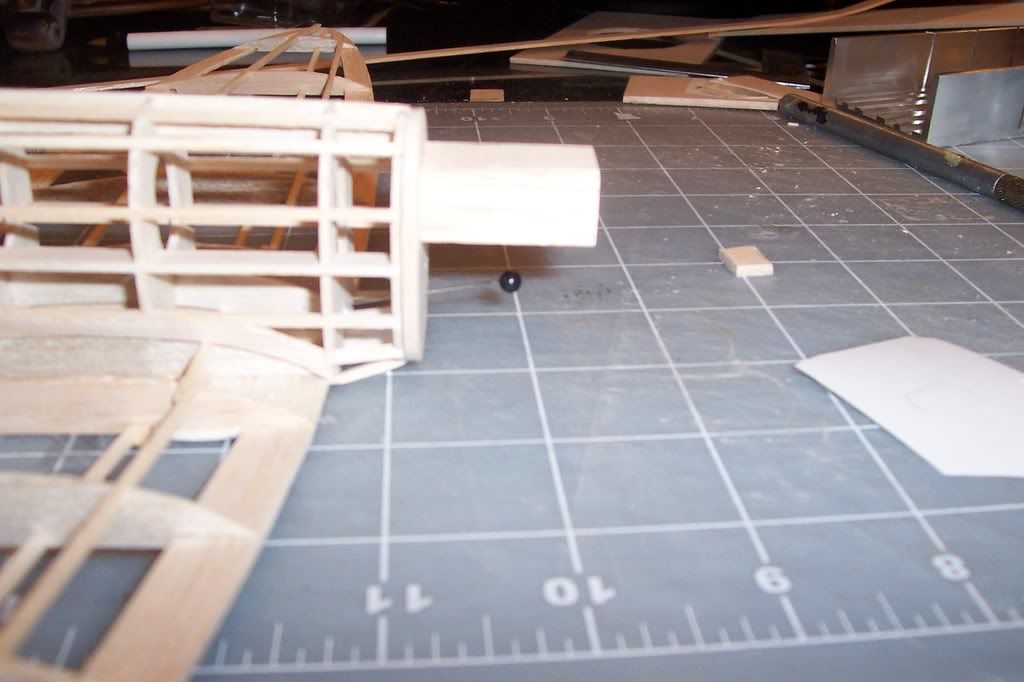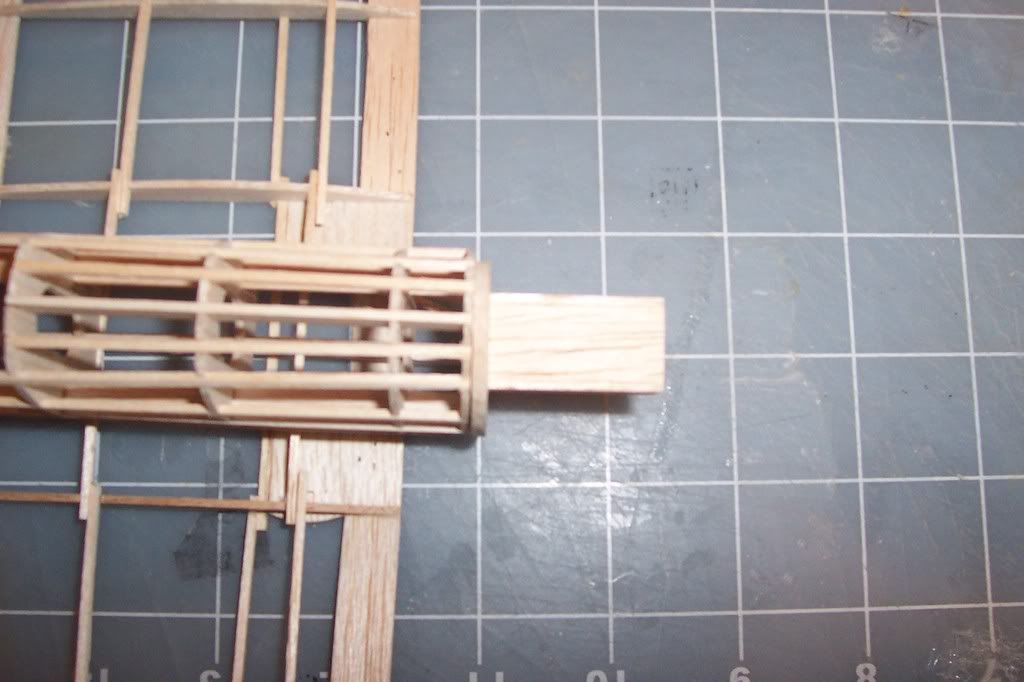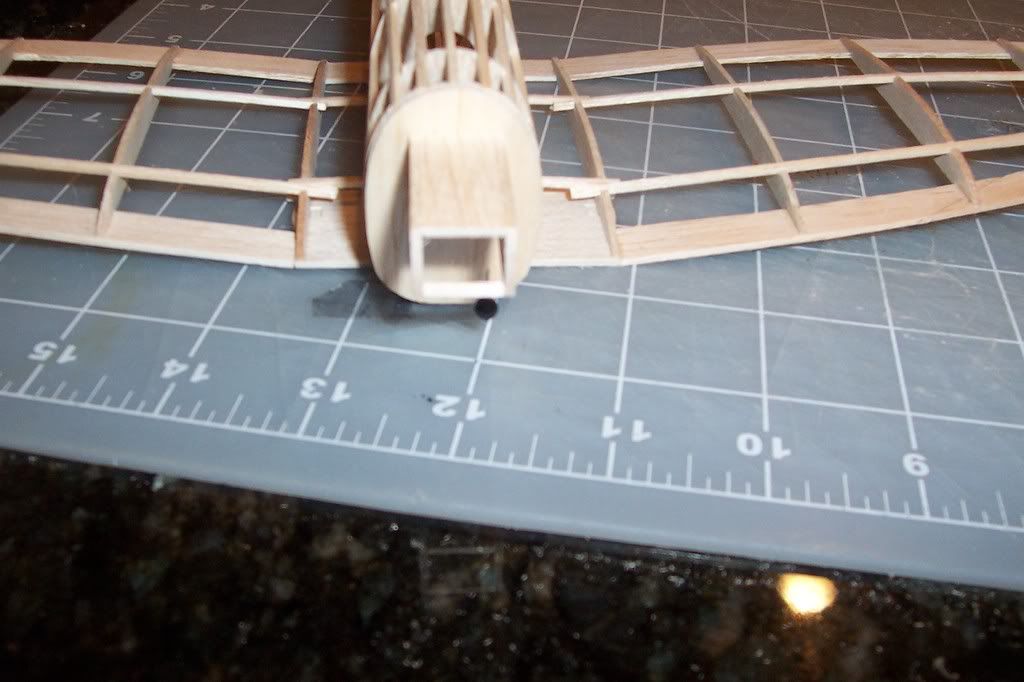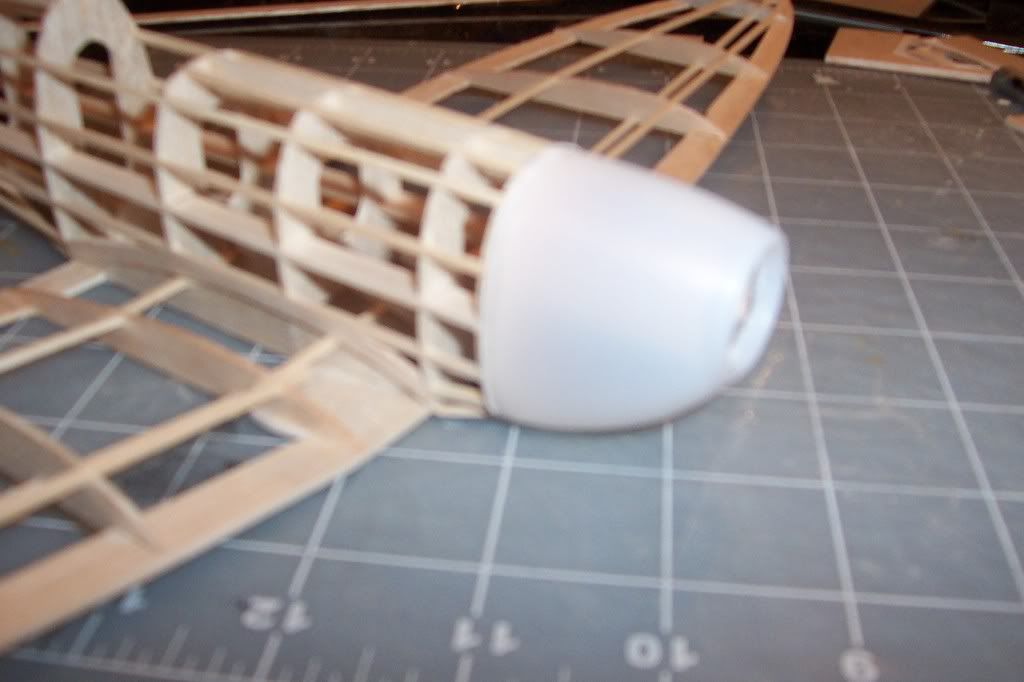I use my sanding sticks to notch out the formers and sand the formers to be accurate. As you notice with Guillows kits the Die Cut formers are never exact to what is on the plans so you have to do something to make sure these kits come out straight. What I use is the side keels, I line up all the formers on the side keel stringer and mark where all the other stringers go and then sand the notches out. Yes it is true Guillows kits are heavy, but they can still fly if built straight. Airplanes don't fly well built like a banana. The best way to avoid the banana is make sure all the stringers fit perfect and are not forced to conform to the formers. More on that later. Here are some pictures.
